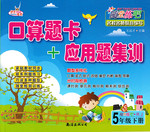题目内容
------Poor Steve! I could hardly recognize him just now!
------_______________, He has changed so much.
A. Never mind B. No problem C. Not at all D. Me neither
【答案】
D
【解析】本题考查交际用语,Me neither,在这儿相当于Neither could me.我也没认出来。

练习册系列答案
 口算题卡加应用题集训系列答案
口算题卡加应用题集训系列答案 综合自测系列答案
综合自测系列答案
相关题目